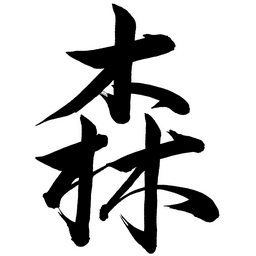| Articles | |
| Alan K. L. Chan | Affectivity and the Nature of the Sage: Gleanings from a Tang Daoist Master |
| Norman H. Rothschild | Empress Wu and the Queen Mother of the West |
| Shih-Shan Susan Huang | Daoist Imagery of Body and Cosmos, Part 1: Body Gods and Starry Travel |
| Kenneth R. Robinson | Daoist Geographies in Three Korean World Maps from the |
| Adeline Herrou | A Day in the Life of a Daoist Monk |
| Forum | |
| Elliot Cohen | Psychology and Daoism: Resisting Psychologization—Assisting Dialogue |
| Seth Harter | Practice in the Classroom: To Taiji or Not to Taiji |
| Mark Johnson | Ni Hua-Ching’s Americanization of “The Eternal Breath of Dao” |
| Elena Valussi | Women’s Qigong in America: Tradition, Adaptation, and New Trends |
| Jean DeBernardi | Wudang Mountain and the Modernization of Daoism |
Alan K. L. Chan – Affectivity and the Nature of the Sage: Gleanings from a Tang Daoist Master
This essay explores the place of qing in conceptions of the nature and being of the sage, focusing on the Tang Daoist master Wu Yun. What it seeks to show is that assumptions about the attainability of “sagehood” and the “nature” (xing) of human beings inform the interpretation of qing. In this context, the idea that the sage is quintessentially wuqing, marked by the absence of desire and emotions, will be examined. I will close with a comparative note on a Confucian account of the same period—namely, the Fuxing shu by Li Ao.
Norman Harry Rothschild – Empress Wu and the Queen Mother of the West
This essay examines the curious and significant role played by the Queen Mother of the West, the most powerful female deity in the Daoist pantheon, in political rhetoric crafted by Wu Zhao and her capable team of rhetoricians. As Gaozong’s empress, Wu Zhao offered a sacrifice at a shrine to the Queen Mother of the West on Mount Song. This unique female sovereign developed a repertoire of symbols and ceremonies that were associated with the Daoist goddess. Wu Zhao also cast her image in the same mold of timeless beauty as Xiwangmu. Finally, in her later years, surrounded by perfumed youths, Wu Zhao theatrically transformed her inner court into a Daoist fairyland, styling herself a latter-day Queen Mother of the West.
Shih-Shan Susan Huang – Daoist Imagery of Body and Cosmos, Part 1: Body Gods and Starry Travel
This article presents Daoist visual representations of body and cosmos, drawing extensively on illustrations and diagrams from texts preserved in the Ming-dynasty Daoist Canon. To examine how the Daoist perception of body and cosmos unfolded over time, I discuss images of four types: body gods, imaginary journeys to stars, grotesque spirits and body worms, and the body transformed in internal alchemy—the first two in this part, the next two in JDS 4 (2011). The current work hopes to contribute to interdisciplinary studies of Chinese art, religion, and science. From the visual perspective, it hopes to add to the on-going examination of charts or maps (tu) and to enrich our understanding of the representation and perception of what “body” means in Chinese visual culture. In terms of Daoist studies, my dominantly visual approach aims to complement the many textual approaches on this topic. This study also adds to the growing scholarship of Daoist art, which has so far focused more on public devotional paintings and statuary and less on private imagery associated with meditation and visualization.
Kenneth R. Robinson – Daoist Geographies in Three Korean World Maps
Four Korean maps of the world compiled during the Chosŏn period show Chosŏn of the fifteenth and sixteenth centuries and present known lands from Japan to continental western Europe. These maps are informed by a Confucian ordering of culture and by Daoist conceptions of space. However, the Daoist geography of continents and paradise isles differs among the four maps. The Tenri University Library’s Tae Myŏng-guk to (Map of Great Ming) and the Honmyōji temple’s Tae Myŏng-guk chido (Map of Great Ming) present the most detailed Daoist geographies. Korean elites in the fifteenth and sixteenth centuries were well read in Chinese poetry, and wrote often of travel to destinations such as those described in Shizhou ji (Record of the Ten Continents). These two world maps recast confirmed lands within the four seas where Daoist continents and paradise isles were located and immortals resided.
Adeline Herrou – A Day in the Life of a Daoist Monk
This article seeks to give an ethnographical description of the everyday life of an ordinary Daoist monk in China today. As it follows Yang Zhixiang from early morning until night, it deals with his current main occupations—in this case, work on the glyphomancical dissection of the character for Dao, fate calculation for young fiancés, preparation for a healing ritual, the ascetic practice of self-perfecting through refinement, etc. — as well as more basic scenes such as meals, gestures and postures, various domestic tasks, and the reconstruction of the temple. It also relates fragments of his own past life and implicitly outlines the path that led him to the monastery and the vocation that made him become a monk. Finally, it aims to convey the diversity of the monks’ activities and then, by considering them serially as a whole, to arrive at an understanding of the specific texture of Daoist monastic life and its reason for being.
